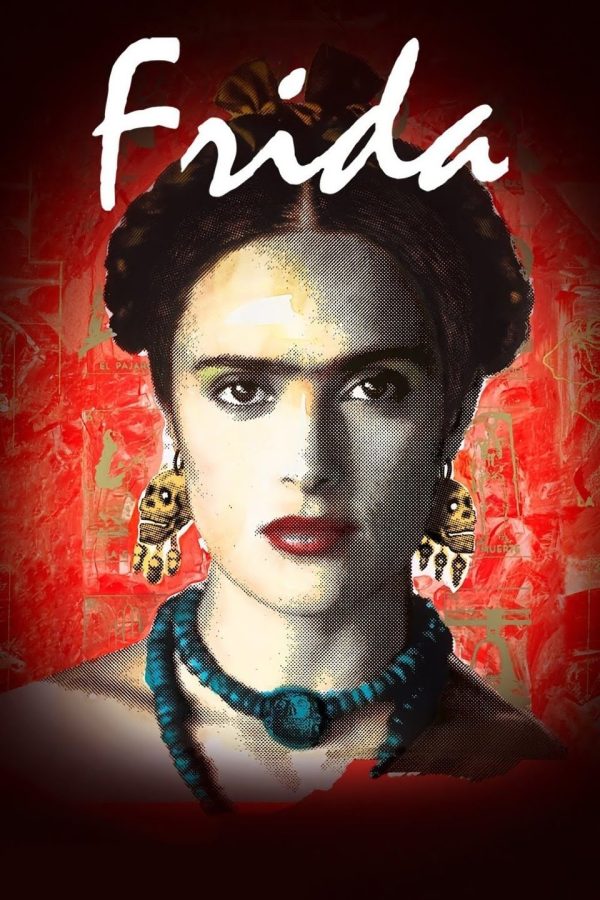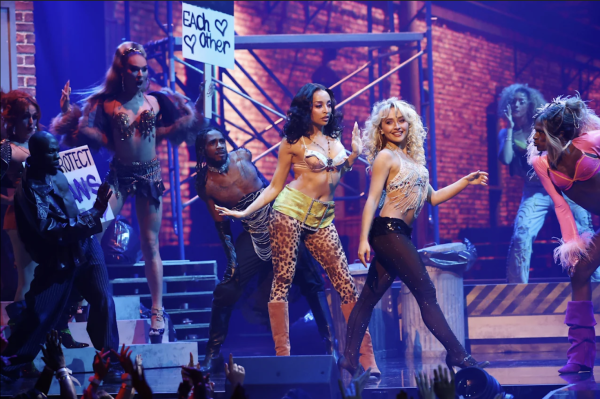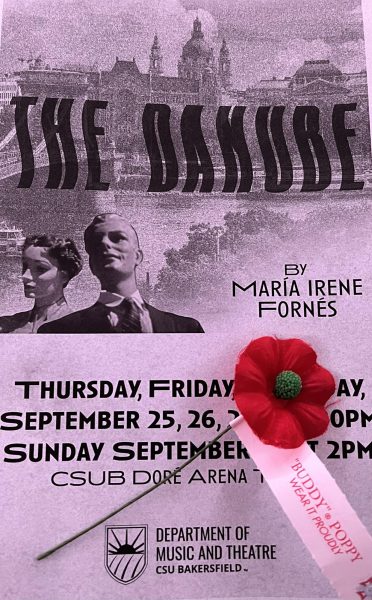Movie Review: Frida continues to influence others with her legacy of perseverance
April 26, 2022
Frida (2002) goes out of its way to portray the life of now widely known and recognized painter and feminist, Frida Kahlo, with the portrayal of critical and pivotal events of her life while at the same time incorporating her specific artistic style– magical realism.
The movie was directed by Julie Taymor and adapted from Hayden Herrera’s Frida: A Biography of Frida Kahlo. The biographical movie depicts how she was able to channel the pain of her injury and non-traditional and complex marriage through her art.
She was able to find the courage to take control over all aspects of her life, despite the unfortunate amount of adversity she faced. As such, she is recognized as a symbol of perseverance and feminism. To put into perspective, she dove into a primarily male dominated field of art. She did this while being disabled, and fighting the societal and familial demands of what to do with her life. She had to work against those trying to define her as a woman or, more specifically, how she was not woman enough under their definitions.
In essence, she rejected traditional impositions of femininity on herself and in her art. For instance, one of the opening scenes of the movie is her showing up to her family portrait wearing a full suit and tie with her hair slicked back, which eventually became inspiration for a self-portrait she painted. To this, her mother rolls her eyes in frustration, but her father responds, “I always wanted a son.”
However, her strong personality is put to the test after enduring a near-fatal bus accident, which only encouraged her to find the perseverance to overcome this obstacle. As a result of the accident, she is left to manage the effects of the injuries she suffered, which include damage to her spine, pelvic bone, and legs. She is forced to rely on others, leave university, and fight to learn how to walk again. When she sees her dad has begun to lose hope in her eventual recovery and feel defeated financially, she says, “Right now, I’m a burden, but I hope to be a self-sufficient cripple one day.”
Instead of following the easier path to alleviate this burdensome feeling she is experiencing by marrying off, she takes full advantage of how she sought refuge in painting during this time to turn it into a career. The review titled, “Frida” by Roger Ebert (2002) states, “Frida Kahlo seems to have painted in order to seek the zone and escape the pain: When she was at work, she didn’t so much put the pain onto the canvas as channel it away from the conscious thought and into the passion of her work.”
Moreover, the movie avoids the male gaze by embracing Frida’s heritage and artistic style as influence when depicting how Frida’s body changes when she suffers through the accident. The shot right after the scene of the bus accident shows Frida lying with a pole through the bottom half of her body. The shot itself looks like a portrait of her with blood perfectly distributed throughout her body and the openings the pole has caused as well as gold dust sprinkled on top. The scene then transitions to show skeletons taking notes and discussing all the ways her body has been broken.
Daisy Leign-Phippard (2018) recognizes this as a way of honoring Frida when she explains, “Past just recreating her art in the composition of a shot, it reproduces her style, her love of color,” in her article, “#DirectedByWomen Frida, and Manifesting Power in Women Past the Body.”
This women-led movie makes sure to portray her story in a way that encapsulates all of who she was; it does not shy away from scenes that portray women as less than whole and perfect.






